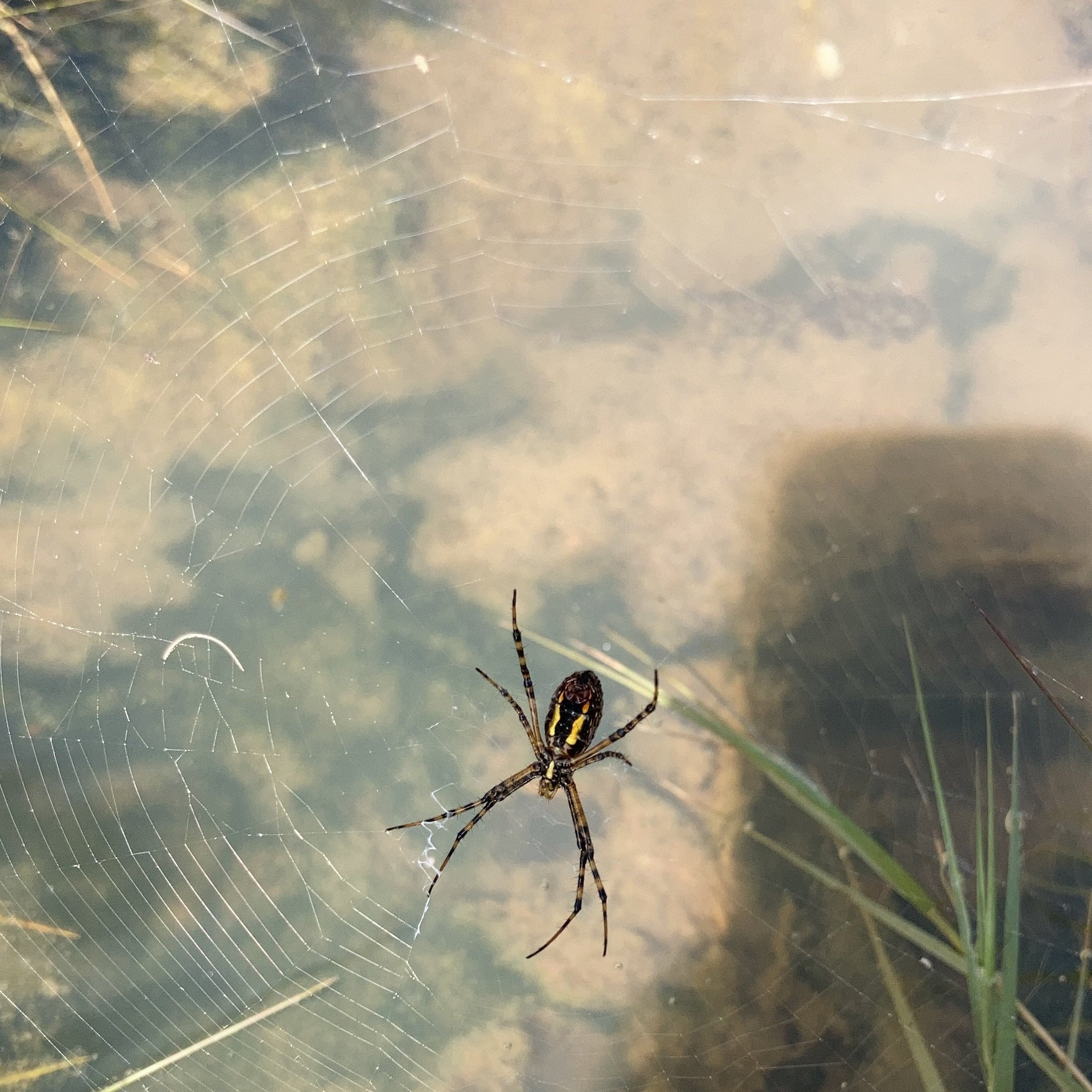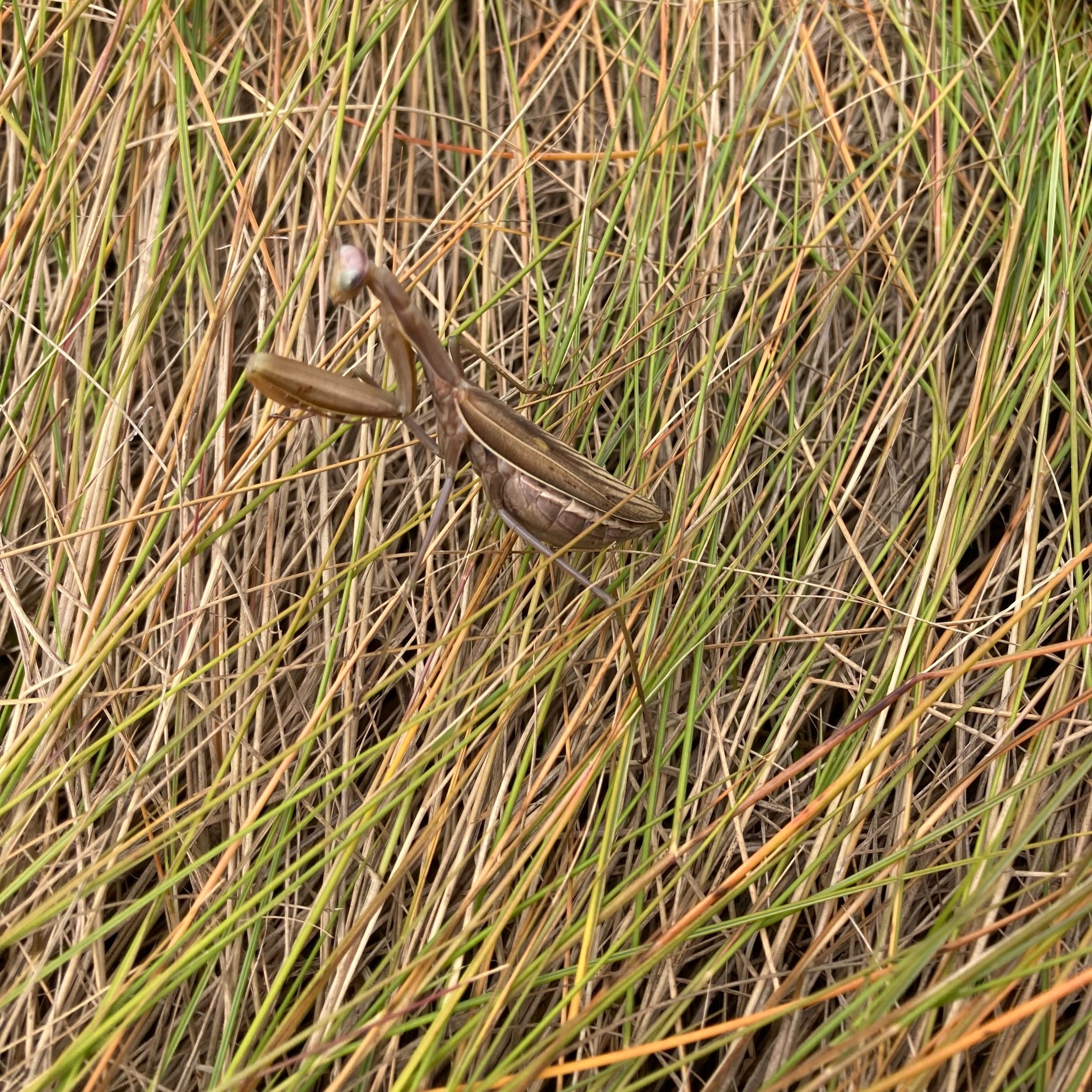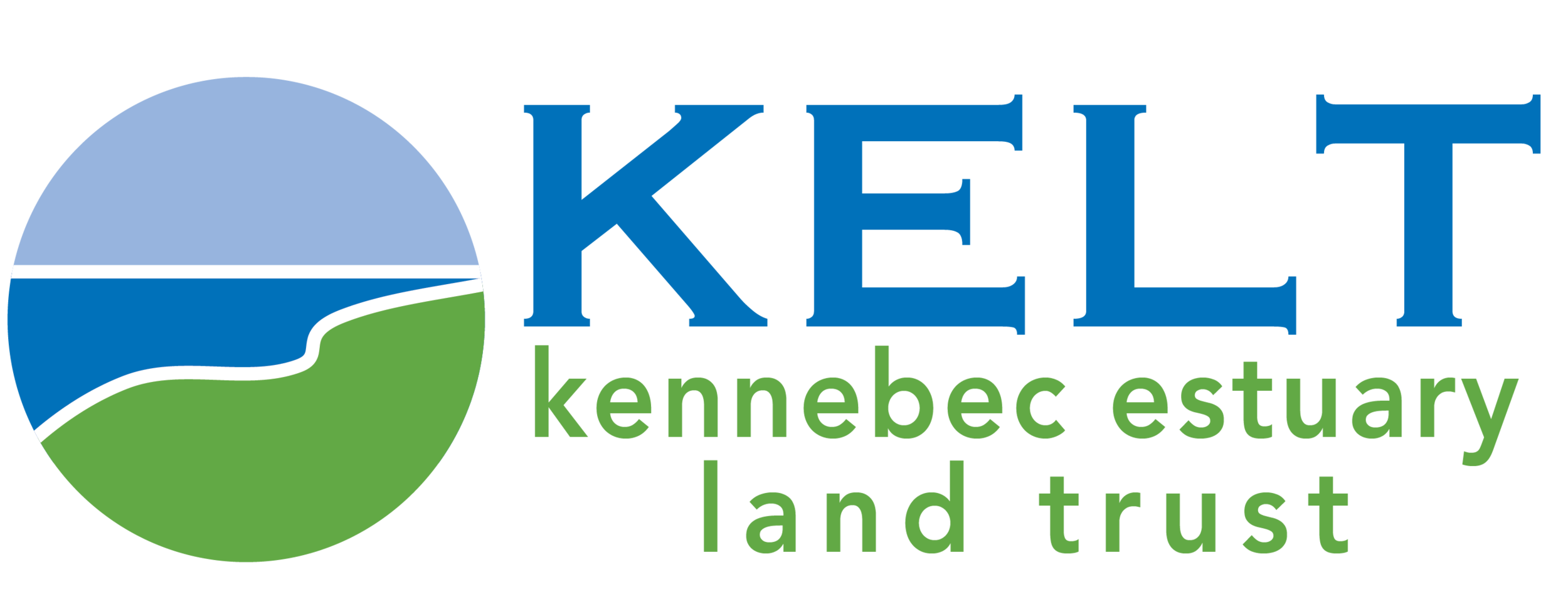A Day In Hip Boots
An essay written by Jane Harrison, a KELT volunteer and Maine Master Naturalist Volunteer.
Transect and measurement line on the marsh.
Recently, on a beautiful September morning I set off with Ruth Indrick, Project Director at KELT, to survey the plants in KELT’s Little River Salt Marsh in Georgetown as part of their marsh restoration project. When we arrived near the site and pulled off on the side of the road, Ruth presented me with my first ever pair of hip boots. I have never before worn boots that went any higher than my knee (even as a teenager in the 60s…) so my first challenge was getting them on. Ruth knew all the tricks, however, and with her help I managed to get my feet all the way to the bottom and the tops all the way to my hips. She then led the way through a wooded area down to the marsh where we would begin our survey.
Several years ago, KELT removed an abandoned logging road that had restricted the flow of water through the marsh. Since then they have been monitoring water quality and plant life at the site to see how well the salt marsh is recovering. Our goal that day was to monitor two of the four established transects. We set off first to the furthest transect which was quite a bit downstream from the former road; it was being used as a reference location for vegetation that had not been affected by the restriction of the road. To get there, we had pretty easy going, even in our hip boots, over the vast golden areas of the salt hay. But it was necessary to cross a channel to get to the transect site. Fortunately, it was still a rather low tide, so with some trepidation I followed Ruth’s lead and, trusting my hip boots, waded across the channel and up the other side. My feet did sink in the mud to an alarming degree, but only for a few steps.
Back up on the more solid ground of the salt hay, we set up our first transect. This involved stretching a 30-meter tape measure across the marsh from the edge of the woods out toward the channel. We laid down a meter-square marker and thoroughly searched through that plot for whatever vegetation was there, identifying it, counting stems and determining the percentage of the area each species filled.
I was unfamiliar with most marsh plants, especially their Latin names, so Ruth very patiently instructed me how to tell them apart as well as letting me in on some fun facts about them. Salicornia (Glasswort) and Limoneum (Sea lavender) were two of my favorites. We made some other discoveries besides the plant life...two praying mantises, a beautiful orb weaver with her web spanning across a small wet area, and an incessantly chattering king fisher.
We laid our square-meter marker along the transect every 3 meters, establishing 15 plots. The first survey took a couple of hours. When we finished that, began the walk back upstream to the next transect. This required another crossing of the channel, which had by now gotten a bit deeper as the tide had been rising since we’d first crossed it.
“We made some other discoveries besides the plant life...two praying mantises, a beautiful orb weaver with her web spanning across a small wet area, and an incessantly chattering king fisher.”
Again, Ruth waded in at the spot we’d crossed before, and made it across without too much effort. I, however, thought I would try my own route. I took a couple of steps and sank so quickly in the mud that I felt a surge of panic and rushed to change course and follow Ruth’s path. But the boots were so well sunk in the mud that I lost my balance and sat right down in the channel. The water poured into the boots and it might have been even harder for me to extricate myself had I not remembered that my iPhone was in my back pocket. The adrenaline from that realization propelled me out of the water with such force and speed that not even a drop had made it to my phone. But some very unlady-like expressions may have passed my lips.
The infamous marsh channel! PC: Jane Harrison
I was soaked from the waist down, so Ruth offered to call it a day right then and there. But it was a sunny day and I was enjoying the marsh so much that I chose to continue in spite of the sloshing of water in my boots at every step. We had a snack while I dried off a bit, and then returned to our work, this time on the transect located at the site of the former logging road.
In a couple more hours we had finished that survey, packed up the equipment and headed back through the woods to the car where I met my next challenge...getting the hip boots off of my soaking wet legs. I managed to get one off using the other as a pry, but had nothing to use for the remaining boot, so Ruth graciously agreed to tug it off. It was as though the boot had become one with my foot. But she did get it off eventually, and I rather ceremoniously poured the water out of the boots while Ruth put a towel down on the passenger side of her car, and in my soaking wet pants and socks, we drove back to town.




